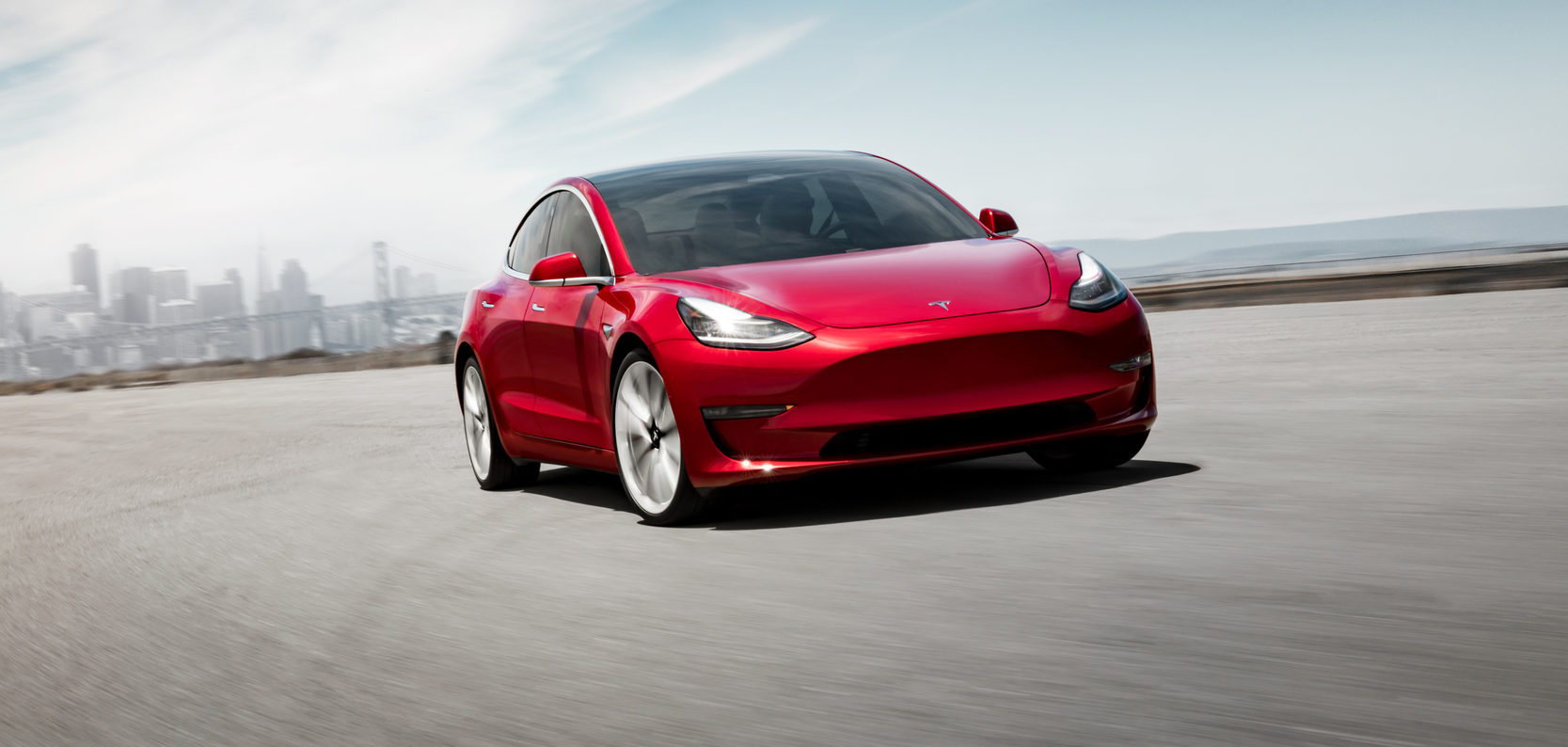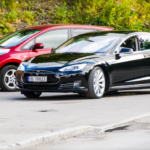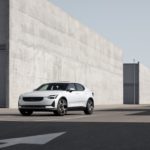

News
Tesla is ending the era of half-hearted, compliance electric cars
Carried forward by the momentum of electric vehicles like the Tesla Model 3, upcoming EVs from experienced carmakers such as Porsche and Volvo are showing a trend in the auto industry — from this point on, the automotive market will be fought with electric cars, and there will be no turning back.
It might be difficult to imagine today considering the success of the Model 3 and the influx of electric vehicles from veteran carmakers, but there was once a time when EVs were mostly half-hearted attempts whose primary purpose was to meet the mandates set by the California Air Resource Board (CARB). The EVs produced during this period even earned a very appropriate moniker — compliance cars. Among these were the Ford Focus EV, GM’s Spark EV, the Fiat 500e, the RAV4 EV, and the Honda Fit EV, all of which were adequate vehicles, but are costly and compromised in range and cargo compared to their gas-powered counterparts.
During the height of the compliance car era, some companies opted to pursue a different path. Among these is Nissan, whose all-electric vehicle, the Leaf, was sold across the United States. The Leaf would go on to be one of the best-selling EVs in the market. Tesla also saw a lot of growth in but a few years, bringing to market the Model X SUV and the Model 3 midsize sedan. Just like the Leaf, Tesla’s electric cars sold well, finding a strong following among consumers for who prefer the company’s no-compromises approach when it comes to the safety, performance, tech, and features of its vehicles. Tesla’s momentum never really stopped, as seen in the earlier-than-expected launch of the $35,000 Standard Model 3 recently.
It could be said that Elon Musk’s tenacity and his stubborn refusal to give up when faced with large challenges is a reason behind Tesla’s success. With Tesla all but proving that there is a demand for well-designed electric vehicles, other carmakers followed suit. In 2018 alone, several electric cars from established manufacturers were released, headlined by the Jaguar I-PACE, the Audi e-tron SUV, and the Mercedes-Benz EQC. Unlike compliance cars of years past, these vehicles were hyped as essential entries into their respective companies’ shift towards electric mobility. Nevertheless, some of these vehicles, such as the EQC, still carried over much of its gas-powered siblings’ characteristics, such as a front trunk full of components.
More recent electric vehicles from experienced carmakers seem to be better-designed. The Polestar 2 from Volvo, for one, proved impressive during its launch. With its dual motors that produce 408 hp, its deep integration of Google’s Android software, and a starting price of $45,000, the Polestar 2 can serve as an alternative for buyers who do not wish to purchase a Model 3. The Porsche Taycan, which is expected to be unveiled later this year, was also carefully designed from the ground-up as a high-performance electric car. Porsche has fully committed to electrification, with the company retiring its diesel lineup in favor of greener options. In the same way that the Polestar 2 can be an alternative to the Model 3, the Taycan can also be the perfect vehicle for buyers who wish to purchase a large sedan that is not a Tesla Model S.
- Porsche Taycan rendering via TaycanForum.com
The Polestar 2 and the Porsche Taycan. (Photo: Polestar, TaycanForum.com)
If there is anything more that experienced automakers can do, it is to produce their premium electric vehicles in large quantities. Porsche, despite being a low-volume carmaker, is adopting this strategy, with the Taycan’s initial 20,000 a year output being changed to 40,000 per year. Volvo is planning to produce a decent number of Polestar 2 every year as well, with the company planning on an output “north of” 50,000 units per year. This is something highlighted by Elon Musk in a tweet earlier this year, when he noted that Tesla’s competition is “not the small trickle of non-Tesla electric cars being produced, but rather the enormous flood of gasoline cars pouring out of the world’s factories every day.”
Elon Musk will be the first person to remind anyone that Tesla’s primary goal has always been to accelerate the advent of sustainable transport. Considering the influx of electric vehicles from veteran carmakers, as well as seemingly solid entries from younger companies like Rivian, it appears that finally, after years of swimming against the current, the auto industry is finally getting on board with Tesla’s mission. For Elon Musk, at least, it appears that his Master Plan, which outlines his vision for sustainable transportation, is coming together.
News
Tesla begins Robotaxi certification push in Arizona: report
Tesla seems serious about expanding its Robotaxi service to several states in the coming months.

Tesla has initiated discussions with Arizona transportation regulators to certify its driverless Robotaxi service in the state, as per a recent report from Bloomberg News. The move follows Tesla’s launch of its Robotaxi pilot program in Austin, Texas, as well as CEO Elon Musk’s recent comments about the service’s expansion in the Bay Area.
The Arizona Department of Transportation confirmed to Bloomberg that Tesla has reached out to begin the certification process for autonomous ride-sharing operations in the state. While details remain limited, the outreach suggests that Tesla is serious about expanding its driverless Robotaxi service to several territories in the coming months.
The Arizona development comes as Tesla prepares to expand its service area in Austin this weekend, as per CEO Elon Musk in a post on X. Musk also stated that Tesla is targeting the San Francisco Bay Area as its next major market, with a potential launch “in a month or two,” pending regulatory approvals.
Tesla first launched its autonomous ride-hailing program on June 22 in Austin with a small fleet of Model Y vehicles, accompanied by a Tesla employee in the passenger seat to monitor safety. While still classified as a test, Musk has said the program will expand to about 1,000 vehicles in the coming months. Tesla will later upgrade its Robotaxi fleet with the Cyercab, a two-seater that is designed without a steering wheel.
Sightings of Cybercab castings around the Giga Texas complex suggests that Tesla may be ramping the initial trial production of the self-driving two-seater. Tesla, for its part, has noted in the past that volume production of the Cybercab is expected to start sometime next year.
In California, Tesla has already applied for a transportation charter-party carrier permit from the state’s Public Utilities Commission. The company is reportedly taking a phased approach to operating in California, with the Robotaxi service starting with pre-arranged rides for employees in vehicles with safety drivers.
News
Tesla sets November 6 date for 2025 Annual Shareholder Meeting
The automaker announced the date on Thursday in a Form 8-K.

Tesla has scheduled its 2025 annual shareholder meeting for November 6, addressing investor concerns that the company was nearing a legal deadline to hold the event.
The automaker announced the date on Thursday in a Form 8-K submitted to the United States Securities and Exchange Commission (SEC). The company also listed a new proposal submission deadline of July 31 for items to be included in the proxy statement.
Tesla’s announcement followed calls from a group of 27 shareholders, including the leaders of large public pension funds, which urged Tesla’s board to formally set the meeting date, as noted in a report from The Wall Street Journal.
The group noted that under Texas law, where Tesla is now incorporated, companies must hold annual meetings within 13 months of the last one if requested by shareholders. Tesla’s previous annual shareholder meeting was held on June 13, 2024, which placed the July 13 deadline in focus.
Tesla originally stated in its 2024 annual report that it would file its proxy statement by the end of April. However, an amended filing on April 30 indicated that the Board of Directors had not yet finalized a meeting date, at least at the time.
The April filing also confirmed that Tesla’s board had formed a special committee to evaluate certain matters related to CEO Elon Musk’s compensation plan. Musk’s CEO performance award remains at the center of a lengthy legal dispute in Delaware, Tesla’s former state of incorporation.
Due to the aftermath of Musk’s legal dispute about his compensation plan in Delaware, he has not been paid for his work at Tesla for several years. Musk, for his part, has noted that he is more concerned about his voting stake in Tesla than his actual salary.
At last year’s annual meeting, TSLA shareholders voted to reapprove Elon Musk’s compensation plan and ratified Tesla’s decision to relocate its legal domicile from Delaware to Texas.
Elon Musk
Grok coming to Tesla vehicles next week “at the latest:” Elon Musk
Grok’s rollout to Tesla vehicles is expected to begin next week at the latest.

Elon Musk announced on Thursday that Grok, the large language model developed by his startup xAI, will soon be available in Tesla vehicles. Grok’s rollout to Tesla vehicles is expected to begin next week at the latest, further deepening the ties between the two Elon Musk-led companies.
Tesla–xAI synergy
Musk confirmed the news on X shortly after livestreaming the release of Grok 4, xAI’s latest large language model. “Grok is coming to Tesla vehicles very soon. Next week at the latest,” Musk wrote in a post on social media platform X.
During the livestream, Musk and several members of the xAI team highlighted several upgrades to Grok 4’s voice capabilities and performance metrics, positioning the LLM as competitive with top-tier models from OpenAI and Google.
The in-vehicle integration of Grok marks a new chapter in Tesla’s AI development. While Tesla has long relied on in-house systems for autonomous driving and energy optimization, Grok’s integration would introduce conversational AI directly into its vehicles’ user experience. This integration could potentially improve customer interaction inside Tesla vehicles.
xAI and Tesla’s collaborative footprint
Grok’s upcoming rollout to Tesla vehicles adds to a growing business relationship between Tesla and xAI. Earlier this year, Tesla disclosed that it generated $198.3 million in revenue from commercial, consulting, and support agreements with xAI, as noted in a report from Bloomberg News. A large portion of that amount, however, came from the sale of Megapack energy storage systems to the artificial intelligence startup.
In July 2023, Musk polled X users about whether Tesla should invest $5 billion in xAI. While no formal investment has been made so far, 68% of poll participants voted yes, and Musk has since stated that the idea would be discussed with Tesla’s board.
-

 Elon Musk1 week ago
Elon Musk1 week agoTesla investors will be shocked by Jim Cramer’s latest assessment
-

 Elon Musk3 days ago
Elon Musk3 days agoElon Musk confirms Grok 4 launch on July 9 with livestream event
-

 Elon Musk15 hours ago
Elon Musk15 hours agoxAI launches Grok 4 with new $300/month SuperGrok Heavy subscription
-

 News7 days ago
News7 days agoTesla Model 3 ranks as the safest new car in Europe for 2025, per Euro NCAP tests
-

 Elon Musk2 weeks ago
Elon Musk2 weeks agoA Tesla just delivered itself to a customer autonomously, Elon Musk confirms
-

 Elon Musk1 week ago
Elon Musk1 week agoxAI’s Memphis data center receives air permit despite community criticism
-

 Elon Musk2 weeks ago
Elon Musk2 weeks agoTesla’s Omead Afshar, known as Elon Musk’s right-hand man, leaves company: reports
-

 News2 weeks ago
News2 weeks agoXiaomi CEO congratulates Tesla on first FSD delivery: “We have to continue learning!”


















